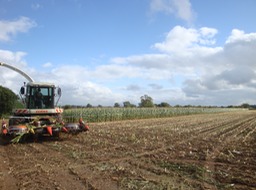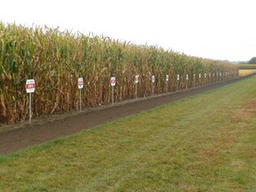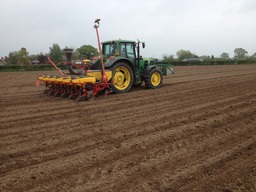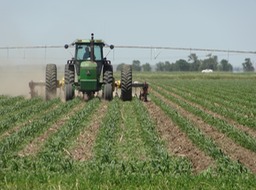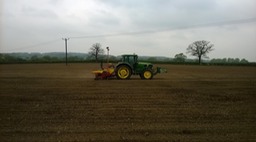Growing consistently high yields of maize is not difficult if done with attention to detail.
Seedbed preparation
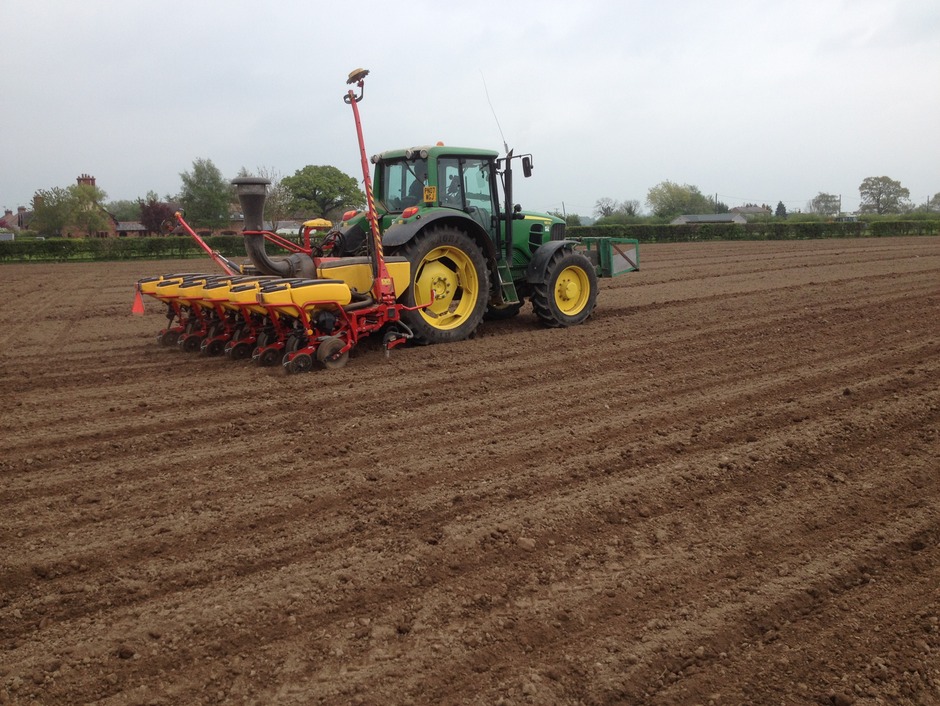
Avoid wet and heavy clay fields if possible. In an ideal world on a plough based system the whole process should take around a week from ploughing to spraying the pre-emergent herbicide.
Plough to bury trash, try not to go too deep if there is clay turning to the surface. Ploughing must be done in good travelling conditions, if done in wet weather the compaction and smearing effect in clay soils is detrimental.
Subsoiling/pan busting
If maize has been grown on the land previously subsoiling is always a good option. There is only one way to check soil structure and that is to dig a test hole with a spade and have a good look at the make up of the soil.
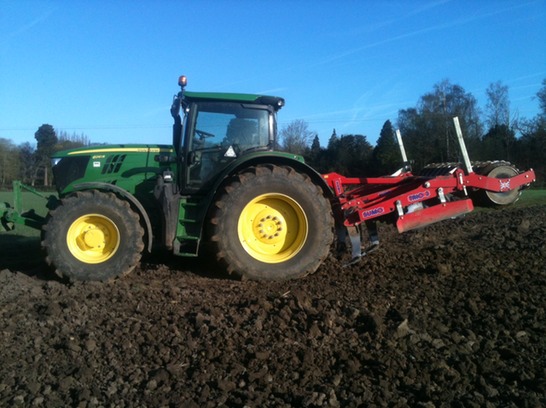
A good soil structure will
· Encourage the movement of air and water in soil
· Improve field drainage
· Improve root growth and nutrient extraction
· Assist the cultivation and seedbed preparation
· Reduce the risk of soil erosion
Digging a test hole is a great idea when subsoiling to check on the effectiveness of the machine and the operator. If using a contractor for subsoiling by lifting the legs to gain forward speed, saves fuel and time when working by the acre,
Subsoiling can be done before the plough, which is sometimes better to free up staff and machinery at planting, but must be done in dry weather. The compaction damage caused by subsoiling in wet weather nullifies the operation.
Subsoiling can also be done on the ploughing also and there are some machines on the market that will do this while working the soil in the same pass. Rows of legs, discs and packer rollers do a fantastic job on ploughed fields. This can save a pass with a power harrow on some clay loam soils. The soil should not be worked on in wet conditions the same as above.
The key is to not let the soil dry out by leaving long intervals between passes with machines. The right amount of soil moisture makes breaking down difficult cloddy soils into fine powder far easier. Furthermore soil moisture is needed to get the seed off to a good start.
Power harrowing

Using experienced operators for power harrowing is key, one slow pass is better than two quick ones.
There are lots of different manufacturers of power harrows and all of them claiming something different. Rotor speed is the key to getting the most from a single pass. Some manufacturers have more rotors on the machines than others, making it more difficult for the clods to get through. A packer roller is essential for heavy soils, the extra weight helps breaks up the clods left behind by the rotary tines of the power harrow.
But that has no relevance a great seedbed can be achieved with any machine under the right soil conditions. On sandy ground one quick pass will usually complete the operation. On more arduous soils the operation can be quite a burden.
When using two or more machines try to make them work with each other.

If the soil moisture is low, work close to each other to prevent any further loss of moisture before the seedbed is worked fine enough. Set the machine at a depth of 2-3 inches and lower the clod bar to the rear of the tines down as far as the machine will tolerate it and always slow down in the heaviest parts of the fields.
If the soil moisture is high, distance between the machines will help the soils to dry if a second pass is needed. One machine is sometimes better then repeat the work if necessary. Clod bars should be raised and forward speed increased to reduce smearing.
Getting a moist, fine and firm seedbed is the key to growing great maize crops
It will
· Keep the moisture in the seed bed and make it available
· Assist the residual chemistry to greater efficacy
· Promote the rooting system and reduce the risk of lodging
· Reduce the risk of a slug attack
· Promote even germination
· Promote Soil structure
· Promote nutrient uptake
Drilling
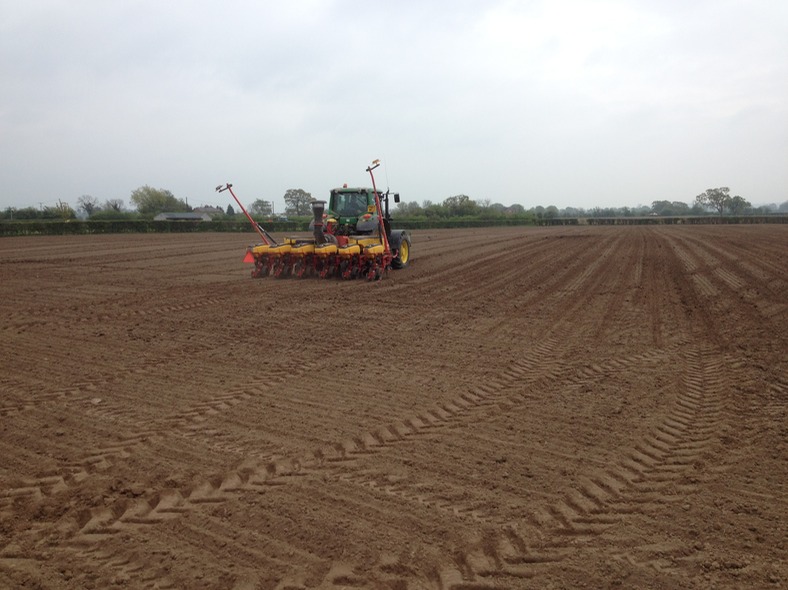
Row widths have been standardised in the UK at 75cm. This offers the best combination in practicality and yield potential. At this width, tractors can easily drive between the rows with low ground pressure tyres as long as they are set no wider than 225cm or 90 inches. On this setting the tractor will straddle 2 rows at drilling. If using the drilling tractor for spraying, this means that you can set the wheel widths set for all operations.
The key to drilling maize is penetration into the moisture. Discs are a great deal better than “boat” type coulters for their consistency. Boats will penetrate as good as discs in fine conditions, but in more arduous conditions discs will outperform them by far.
Most of the precision drills work on the concept that the seed disc rotates in the seeding heart together with the vacuum chamber. This seeding drum is connected to the vacuum fan via a hollow shaft. The seeding disc rotates to a position where the pressure is lost and the seed drops off into the ground.
Accuracy is essential to allow each plant to make the most of the sunlight.
Doubles or planting two seeds at once will create two small plants, neither plant will grow to its full potential nor will have a full cob of corn. Then misses are gaps in the sowing that produce nothing. The minimisation of doubles and misses is critical.
The drills can be easily set to prevent this happening but with some drills up to 16 rows wide and contractors in big demand at drilling time this rarely gets looked at. Every time there is a change of seed the drill should be adjusted accordingly, every seed type has a different shape and will pick up onto the seed discs differently.
Again there are lots of different manufacturers of precision maize drills most work on vacuum pressurised seed meter. These are fairly accurate at low speeds but above 8kmh the doubles and misses are unavoidable. There is a new concept that pressurises the seeding drum unit called the gilstring seed meter. This has a very high accuracy rates at speeds up to 18 kmh. A unique idea from Vaderstad offering a 6 row mounted and 8 row trailed drill. See below a video of how the seed meter works.
Drilling is the most important day of any crops life and it can be a long road to get to drilling conditions, so once it is upon us, get it done correctly.
Rolling
Only Roll if the seedbed is very dry, dusty and no smearing behind the wheels of the tractor. Rolling will help conserve moisture and help the residual herbicide work well if to be applied. If rolled under the wrong conditions the compaction can be quite severe to cause a capping effect of the soil. Capping of the seedbed can severely hinder the germination of the crop and can be seriously costly.
Minimum Tillage Approach (Min Till)
This approach can work for some farmers better than the plough based approach. Using a tine / disc cultivator to remove compaction, chop and bury trash and work the seedbed before power harrowing and drilling. Or in some cases just straight behind the cultivator with the drill.
The savings can amount to £50 per hectare with less passes and fuel, but the Maize Growers Association have said that the plough based system adds 5 tonnes a hectare in fresh weight. That 5 tonnes per acre amounts to £150 a hectare when forage maize is worth £30 a ton, so it is believed to be worth the extra spends. Much is down to personal preference and there is much evidence to say that min-till will do as well as, if not better, than plough based systems in some soils. The plough or min till approach is down to the farmers choice. There are lots of ways to save money using the min till approach, however difficult weeds such as barnyard grass are becoming more persistent and a plough based system has the advantage in burying these weeds.
The ticket to good establishment is conserving moisture, making sure there is no compaction and ensuring optimum growth. Heavy soils benefit the most from ploughing with heavy manure spreading machinery being dragged across the fields often in poor weather, the plough is sometimes needed to level off the fields before subsoiling and power harrowing. On light soils it is always best to keep close to the plough with the other operations to prevent loss of moisture.
